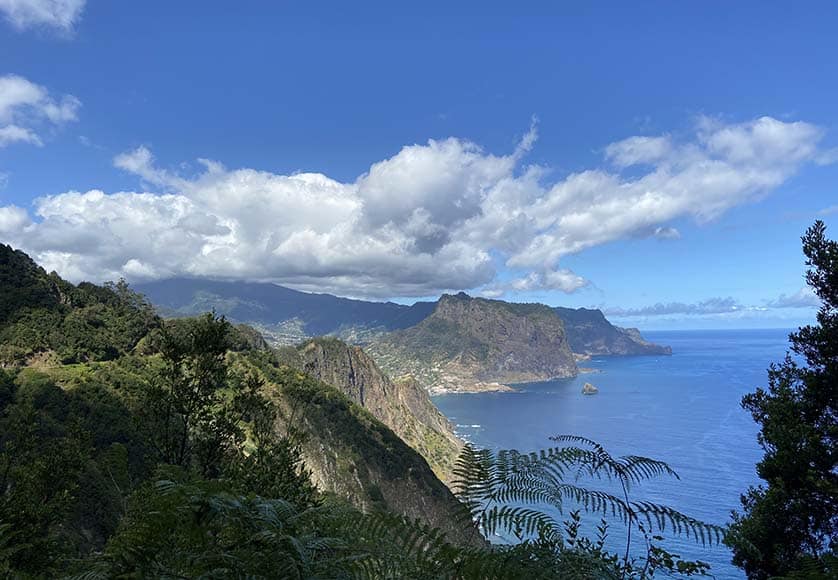I have been visiting and walking on the island of Madeira for more than 20 years and, in that time, the number of walkers has grown and grown
Why is Madeira so popular for walking? It cannot be denied that much of the landscape is not only varied but very dramatic. There are clifftop coastal walks, walks in the Laurisilva forests, high plateau walking and trails connecting mountain top to mountain top. But for many, the attraction are the walks along the ‘levadas’ (water channels).
The origin of the levadas dates to the first settlements of Madeira Island, in the first quarter of the 15th century. Then water became necessary to water farmlands, particularly sugar cane fields – the first crop of high economic value in Madeira – and for the functioning of the first mills and sugar factories.

The sugar cane was grown on the southern slopes of the island, but the highest rainfalls were in the north, so a system of water channels (levadas) was devised to transport the water to where it was needed most. It is worth noting that in the second half of the 15th century, water carried by the levadas was essential to Madeira becoming one of the largest producers and exporters of sugar in Europe, the “world” of those days!
Today, the levada system offers a network of more than 800km that transports water mostly around mountain sides but also through them in tunnels hewn from the rock. In many instances, there are paths that run alongside the channels sometimes wide, sometimes narrow. Because the angle of slope required to transport the water is no more than 5 degrees, there is no real climbing involved which, for many, is an added attraction.
Arguably some of the best levada walks are high up (over 1000m) and offer amazing views of not only the unique vegetation of Madeira but also down to the coastal plains. For those who suffer from vertigo, there are occasional walks which are impossible because there are dramatic sheer drops protected only by simple fences, but a good walking guidebook will advise.
All walking paths and trails on Madeira are clearly signposted and waymarked where necessary. Besides the levadas, there are two spectacular walks on the north coast – the São Lourenço Peninsula (relatively easy but very popular) and the trail passing the viewpoint of Boca do Risco between Porta da Cruz and Machico. This latter one offers amazing walking but is not for the fainthearted, and I have seen more than one walker in my time turn around and return to their starting point.

Another important attraction for walking on Madeira is the wide variety of flora – it is not known as the ‘Flower Island’ for nothing. There are always flowers whatever time of year you visit including agapanthus, hydrangeas, Himalayan ginger plants, proteus and birds of paradise. Many adorning the levada trails.
The Laurisilva Forest deserves special mention. It is well-developed with important conservation areas, the only UNESCO Natural World Heritage Site in Portugal. The Laurisilva forest is characterised by large trees, mostly belonging to the Laurel family (Til trees and Canary laurels) plus others that include the lily of the valley tree, holly and juniper.
Underneath the canopy of large trees, shrubs abound, including tree heather, the Madeira blueberry, broom and the mountain mocano, as well as a lower stratum, rich in ferns, mosses, lichens, liverworts and other small plants.
The forest covers just over 20% of the island interior and some of the best levada walks pass through offering a unique atmosphere. These include the Levada do Furado between Ribeiro Frio and Portela and the Levada do Rei which has a spectacular waterfall at its end point.
Madeira is good for walking at any time of the year. Naturally, in the wintertime, there may be more rainfall in the mountain areas, but the island is blessed with many different microclimates, so while it may be dull and gloomy in the north, the south can be bathed in sunshine. In summer, temperatures never reach the high temperatures of the Portuguese mainland.
Go walking in Madeira. There are walks to suit all abilities and you will not be disappointed!
By Julie Statham
|| features@algarveresident.com
Julie Statham has been walking throughout Portugal for more than 20 years and now acts as a walking advisor and guide for various companies in both Portugal and Europe. She has a background in earthsciences and a Ph.D. in geochemistry from Bristol University, UK.




















